
Stay on the Sidelines or Take an Active Role: Views on U.S. Involvement in the Israel/Palestine Conflict
November 27, 2023
AI and Cinema: Will AI Create the Next Blockbuster or Award Winner?
December 5, 2023
For the last two months, the headlines have been filled with news stories about the ongoing war between the Israelis and the Palestinian militant group Hamas. In the current polarized climate of today’s world, this conflict is a contentious one, with people voicing their support for Israel and Palestine.
In our recent round of research-on-research, we delved deeper into this subject to better understand the empathy around the current conflict and who people are empathizing with the most.Overall, there is greater empathy towards Israel over Palestine, with one-third of respondents showing this preference. Interestingly, there’s a 14% higher likelihood of people empathizing with neither side compared to those empathizing with Palestine, and 28% are unsure of who to empathize with.
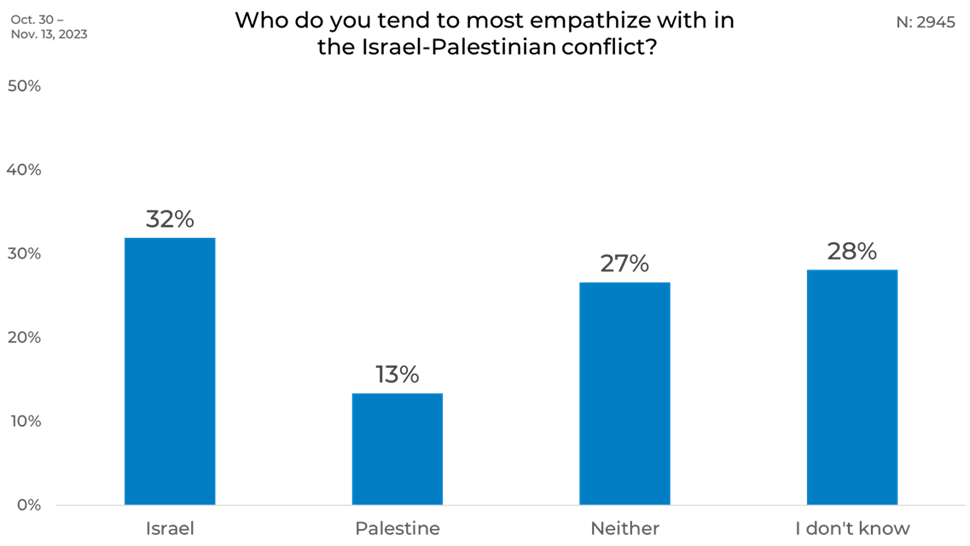
Gender
When breaking down the results by gender, males are 8% more likely to empathize with Israel than females and equally likely to empathize with Palestine. However, males are 7% more likely to empathize with either side. Females are significantly more uncertain, with 16% more likely than males to be unsure of who to empathize with.
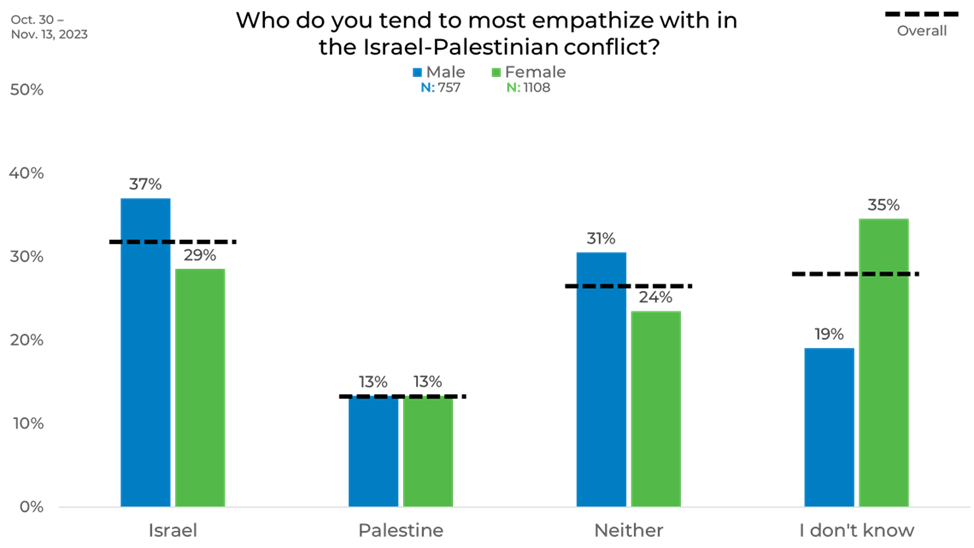
Age
There is a distinct age-related trend in empathy with older respondents, particularly those over 65, who exhibit a marked preference for Israel, with 63% expressing empathy towards it. They are 24% more than any other age group and 50% more than the 18–24-year-olds. In contrast, the younger age groups, mainly those aged 18-24, are more inclined to empathize with Palestine. They are 10% more likely to empathize with Palestine than any other age group and 24% more likely than those over 65. The data also reveals that 14% of those over 65 are unsure of whom to empathize with, compared to one-third of the 18–24-year-olds, indicating a significant difference in decisiveness between age groups.
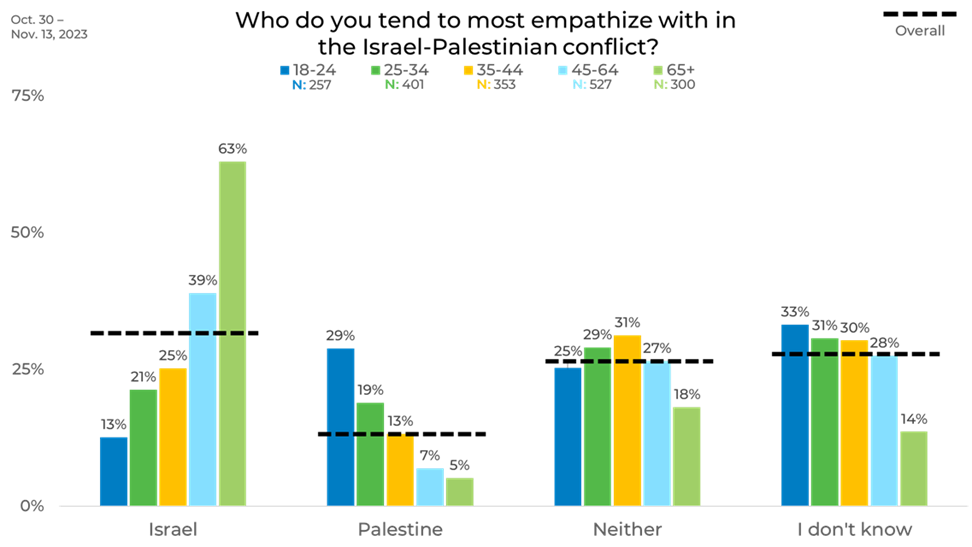
Income
Income levels offer insightful trends in empathizing with the Israel-Palestine conflict. Notably, those with incomes above $100,000 empathize with Israel 21% more than individuals earning below $20,000. On the other hand, empathy towards Palestine peaks among middle-income earners, specifically in the $40,000 to $59,999 range.

Political Affiliation
Political affiliation significantly influences empathy. Half of Republicans empathize with Israel, which is 22% more than Democrats. Meanwhile, Democrats are 5% more likely to empathize with Palestine.

Ethnicity
Ethnic background shows a different breakdown of empathy in the context of the Israel-Palestine conflict. Caucasians are the most likely to empathize with Israel at 39%, 15% more than any other ethnicity. Conversely, Asians or South Asians demonstrate the strongest empathy towards Palestine, at 27%. African Americans, at 33%, are most likely to empathize with neither side.
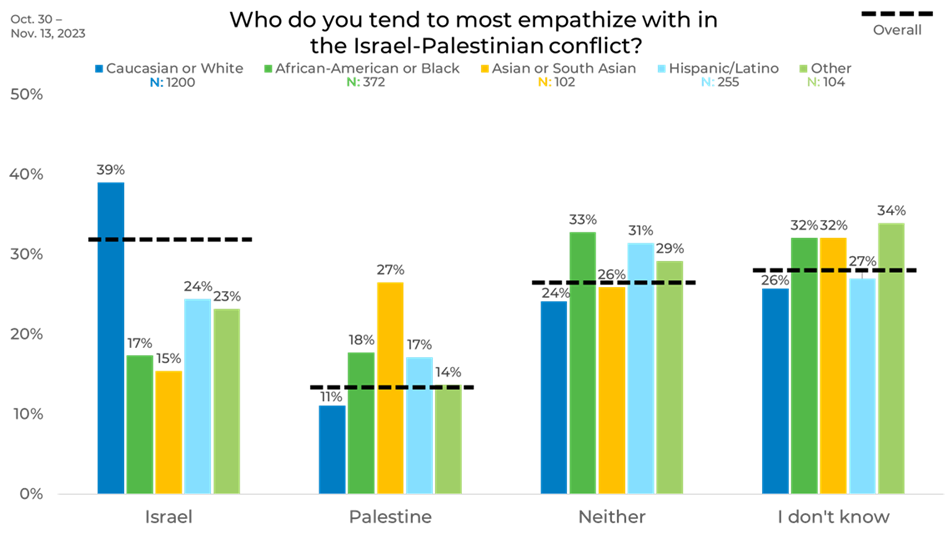
Region
Regional differences, though not vast, are insightful. The West leads in empathy for Israel at 35%, with the South at the lowest at 30%. The Midwest is least empathetic towards Palestine at 11% and has the highest percentage of undecided respondents at 31%.

Panel
Analyzing different panels within the results brought unique insights into empathy. Panel B stands out with the lowest empathy towards Israel, at just 18%, compared to the 30%+ across the other four panels. Meanwhile, Panels A, C, and E display a stronger inclination towards empathizing with Israel, while Panel D has the highest empathy rate for Palestine.
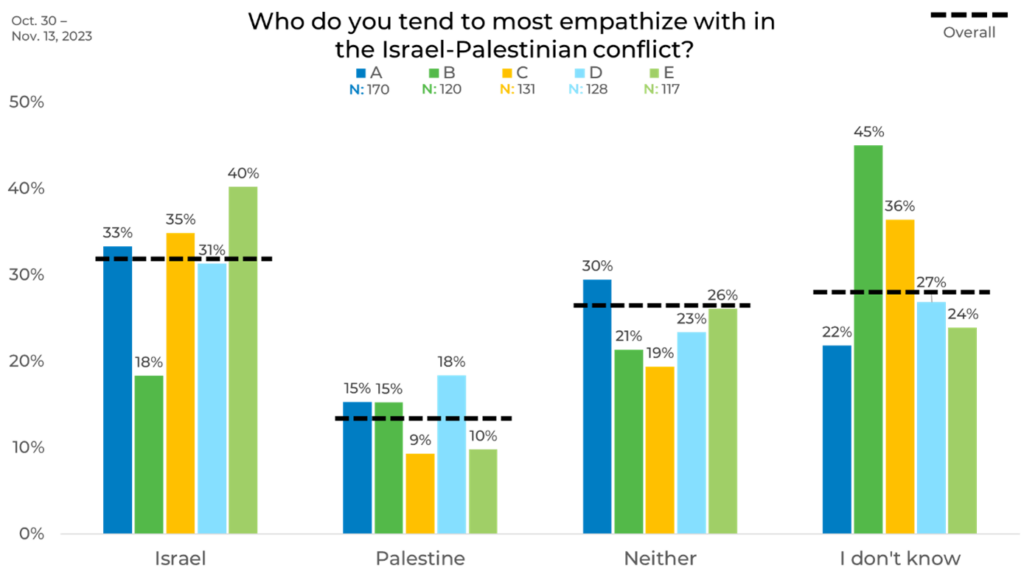
As illustrated by the results above, attitudes towards the Israel-Palestine conflict vary significantly across different demographics and panels, highlighting these factors’ critical impact on your data. For example, relying solely on the responses from Panel B might lead to an overemphasis on uncertainty or neutrality. At the same time, the exclusive use of Panel E could skew results toward a more empathetic view of Israel. Such variations emphasize the necessity of strategic sample blending in research to avoid biases inherent in individual panels. Understanding these dynamics is crucial when gathering data to make critical business decisions.
Learn more about panel differences in our annual report on the sample industry, The Sample Landscape: 2023 Edition.




